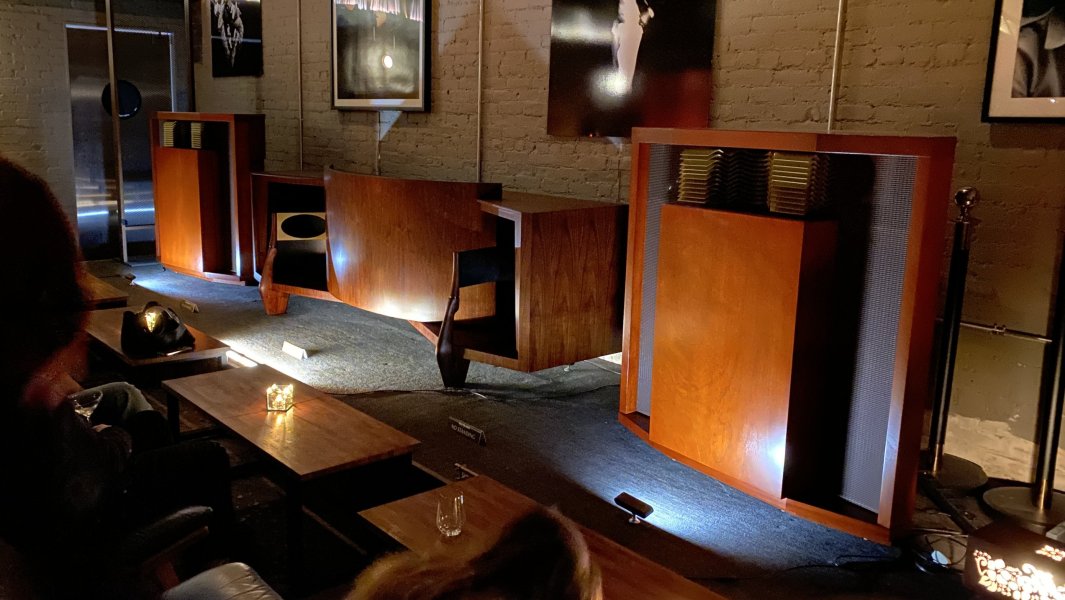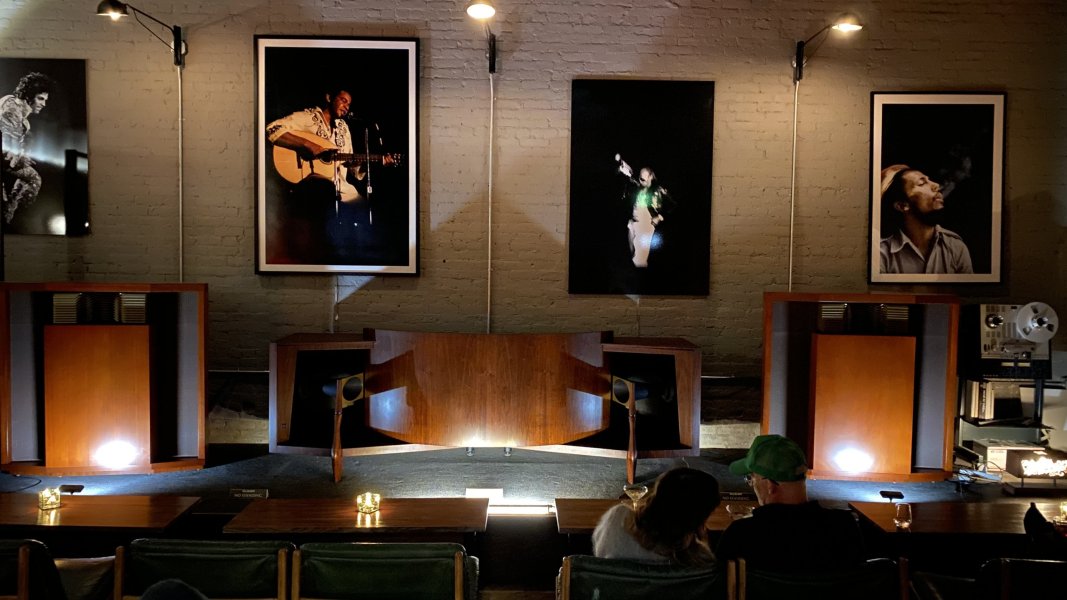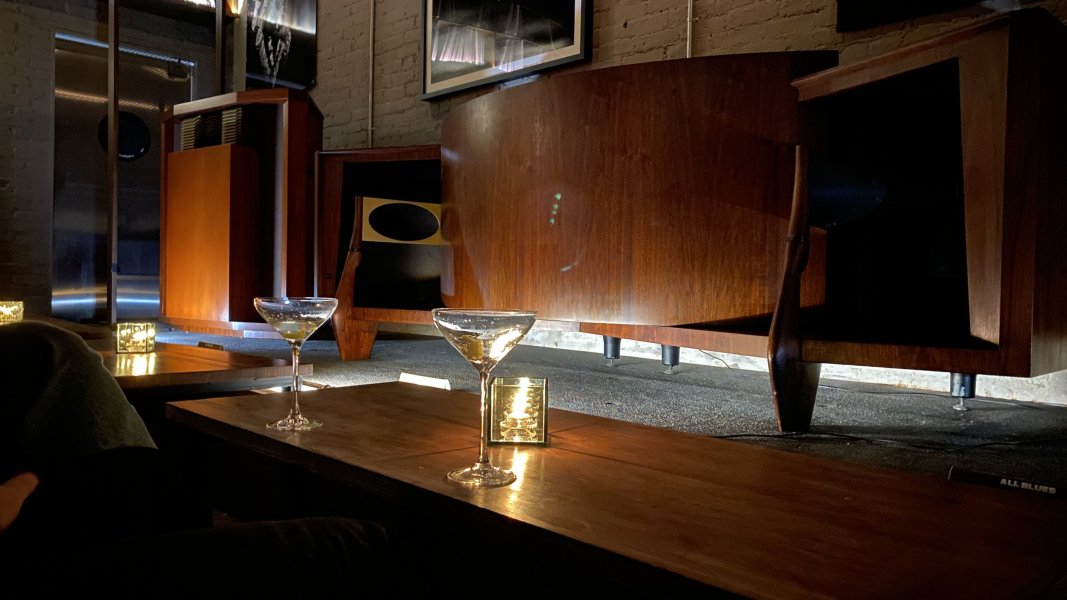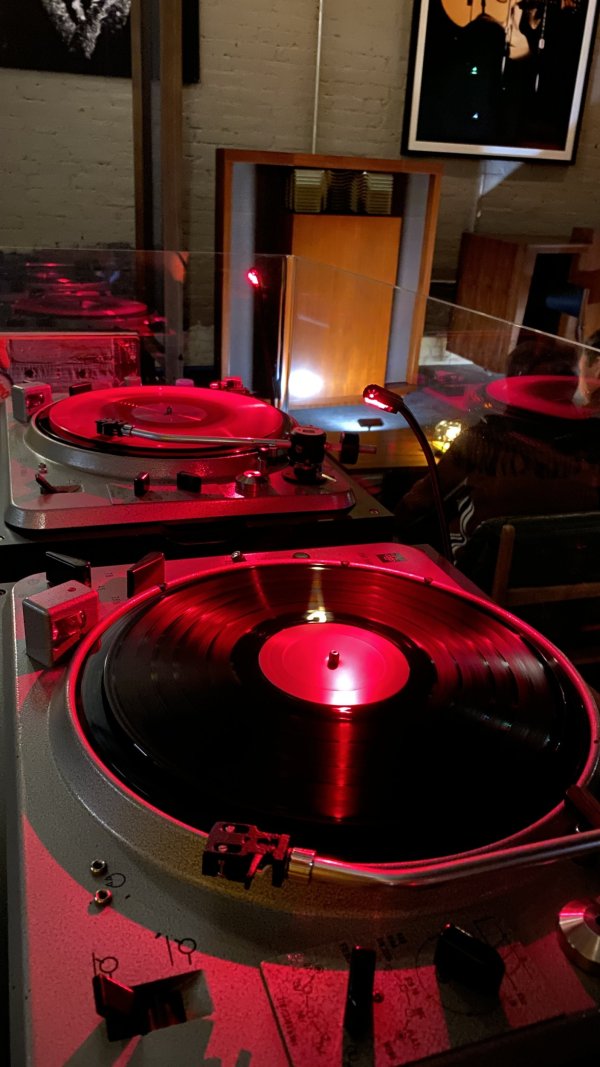I am not in the same league as Mike or Peter, but for “natural sound” below a $10k budget, my experience is that it is hard to beat the Dobbins SP10 MK3. Other tables that I have owned within this budget include the Sota Cosmos IV, Kuzma Stabi Reference, Classic Lenco, and VPI Aries 2.i think many turntables can sound good, but that's not the whole story. until you hear another 'better' turntable side by side with better flow. at one point i had the Dobbins Technics SP-10 Mk2 and also the Dobbins SP-10 Mk3, and the Dobbins the Beat and the NVS all together plus the Dobbins Garrard 301.
the Beat and the NVS were another level beyond the two Technics in terms of flow. and this was an early NVS, not my later build one. and those SP-10's were objectively very very good. i know there are Richard Krebs motors for the SP-10 that are said to be 'better', but never had the chance to compare one to anything else.
so liking a turntable and it having good performance is a different thing than how it 'flows' in the larger scheme of things.....especially for DD turntables.
the new Technics SP-10 is very very good and i'm not knocking it. i've not heard one other than at a show. and not heard one with an exotic plinth either. but unless it's directly compared to higher level turntables it's hard to assume anything. i did hear the SAT XD1 at Axpona last year which uses the SP-10 as a build component and heavily modifies it. that one sounded really good in the system i heard it in. fantastic.
Natural Sound
- Thread starter PeterA
- Start date
You are using an out of date browser. It may not display this or other websites correctly.
You should upgrade or use an alternative browser.
You should upgrade or use an alternative browser.
The differences between my Dobbins SP10 MK3 and the one that Mike had:
For reference, I believe my MK3 was traded in for a Dobbins Beat turntable. I do not plan on upgrading, but if I do, it would be the Beat or perhaps I would follow the trail that Mike blazed and try one of the other tables that he has owned. I can’t fathom my analog setup sounding any better than it is in its current state, but you don’t know what you don’t know, as they say.
- Mine has a 3 layer slate plinth. Mike had a 4 layer slate plinth. Steve Dobbins told me he experimented after Mike had his table and concluded the 3 layer plinth sounds better.
- I upgraded to a phenolic arm board. I believe Mike had one made of some kind of hard wood. I have both phenolic and hard wood boards. The phenolic board provides better micro detail, less smearing, better coherency. To use the words of this thread, I am experiencing better naturalism and flow.
- I use an SAEC platter mat (pad?) that I got from Steve. This upgrade also improved microdetail retrieval, lowered the noise floor, but this is compared to a rubber mat that preceded it.
- I use a Reed 3Q. Mike had a 3P. Probably not much of a difference sonically between the two.
For reference, I believe my MK3 was traded in for a Dobbins Beat turntable. I do not plan on upgrading, but if I do, it would be the Beat or perhaps I would follow the trail that Mike blazed and try one of the other tables that he has owned. I can’t fathom my analog setup sounding any better than it is in its current state, but you don’t know what you don’t know, as they say.
FWIW, the SP10s were designed for radio station use. In such conditions the arm is usually mounted differently from a home system. But people started buying the SP10s for home use and Technics wasn't trying to stop them. So here we are.My friends, SP10MK 3 was in a panzerholtz Albert Porter plinth and he was using some expensive copper platter pad. A few people had this combination and it was pretty highly regarded at the time.
From what you are telling us, Ralph, Technics developed and sold an incomplete design. If there are major issues with the factory plinth and platter pad, the design is incomplete, and it makes me wonder if the engineers even listened to the machine during its development or just went by speed measurements.
I would tend to stay away from designs that need to be heavily modified by the end user to sound good.
Technics made the SL1000 to sort of get around this issue but I think it was half-hearted. Albert's setup went a long ways towards solving some of the problems. I did talk to him about it years ago when he had that setup; I've known Albert about 35 years.
But from all that I've stated here so far, you should now know what the problem is using that panzerholz plinth. I've stated it already. But rather than have you review my earlier comments: Its likely that the panzerholz was actually better damped than the aluminum bit in which the Technics motor resides. The arm is mounted to the panzerholz. So what do you think will happen if the whole thing is subjected to vibration? The answer is the arm is mounted to something that is likely more stable than the platter. The result is the microscopic motion present can by interpreted by the pickup.
I should also point out that while I agree the SP10s are 'incomplete', there's a pretty long list of other turntables that are also 'incomplete' by that metric. Any turntable using an arm pod is going to have similar issues for example. FWIW, this is all just mechanical engineering. The issue is not unlike that of steering and suspension in a car. Audiophiles tend to tolerate things in turntable and tonearm operation that would never be tolerated in a car.
Actually that's not that bad an idea. The pad I use has an aluminum disk inside which gives the pad rigidity. Lacquers used for LP mastering have a similar disk inside them as well. I've been thinking for some years now of getting a disk like that and having a platter pad made from LP vinyl with the disk embedded; probably something about 1/4" thick. Perhaps a second disk of stainless bonded to the aluminum so the dissimilar materials could rob energy from each other.Why not buy a thick vinyl Taylor Swift record and glue it to a platter and then sand off the grooves (or not) and use that as a platter pad? That’ll be vinyl against vinyl. Only half joking.
This isn't entirely true. If you'll recall, I stated I prefer the SL1200G since it does not have the plinth problem. But like any audiophile I like to see how far I can push it. The SL1200G already has a damped platter and employs 4 damping techniques in its chassis. I run mine with that platter pad I mentioned- the weakest part of the SL1200G is, like all Technics machines, its platter pad. I designed an armboard for the SL1200G that allowed me to mount my Triplanar to it. I don't know if that qualifies as 'heavily modified' or not since all I was up to was replacing the arm.Ralph has since amended his statement to be about a highly modified Technics table.
I 'can't hear that' because I use LPs I recorded and know how they are really supposed to sound; IOW it does not exist. Again, I recommend a decent set of microphones (I have a set of Neumann U67s) and a good recorder. Find something to record that you can stand to play over and over and get it mastered to LP. Only then will you have a proper reference.STST Motus II is also low torque. Technics is the most digital of the DDs. Like Lagonda I am surprised Ralph can't hear that.
I have now got a turntable known for its SOTA bearing - the Empire 598. (rumble -90dB, wow and flutter less than .01% )
The 208 uses the same bearing and its far easier to damp the platter with damping compounds so it doesn't ring. Also easier to mount a different arm to it. And that is why we machined our own plinth to mount the 208 parts. That made mounting an arm harder though since it has to be machined for many arms (the Triplanar merely required 3 holes drilled and tappped so most of our 208s built had Triplanar arms on them; it didn't hurt of course that the Triplanar is one of the best radial tracking arms made).
I am not saying I like it because it is low torque, just an observation I like it and it is low torque.
Maybe the suspension helps. It is adjustable so can change the sound.
FWIW, if you look at the vintage machines that are belt drive and idler drive, the most valued (Empire 208, Garrard 301, Lenco, Thorens TD124) all have fairly robust drives. The motor in my Scully mastering lathe was 1/8th horsepower!
I went to NYC last weekend and visited a new listening bar in Tribeca called All Blues. I took my whole family and we all really enjoyed it. My interest was in hearing the JBL Paragon and Hartsfield speakers and EMT 930 turntables. Last night my wife and one of my daughters joined me listening to some jazz, similar to what we heard in NYC. I think the listening bar inspired them and they are now learning what it is about.
The experience at All Blues was similar to what I have in our living room, a very alive and engaging sound. After a moment or two, the system disappears and one is left with the music. We arrived right when the doors opened at six. By seven o'clock, the place was jammed. I recommend a visit. The place is a nice oasis from the hussle and bussle of the big city.




The experience at All Blues was similar to what I have in our living room, a very alive and engaging sound. After a moment or two, the system disappears and one is left with the music. We arrived right when the doors opened at six. By seven o'clock, the place was jammed. I recommend a visit. The place is a nice oasis from the hussle and bussle of the big city.




Last edited:
I went to NYC last weekend and visited a new listening bar in Tribeca called All Blues. I took my whole family and we all really enjoyed it. My interest was in hearing the JBL Paragon and Hartsfield speakers and EMT 930 turntables. Last night my wife and one of my daughters joined me listening to some jazz, similar to what we heard in NYC. I think the listening bar inspired them and they are now learning what it is about.
The experience at All Blues was similar to what I have in our living room, a very alive and engaging sound. After a moment or two, the system disappears and one is left with the music. We arrived right when the doors opened at six. By seven o'clock, the place was jammed. I recommend a visit. The place is a nice oasis from the hussle and bussle of the big city.
View attachment 144953
View attachment 144954
View attachment 144955
View attachment 144956
Isn't it a little weird going to a bar to listen to a system? I can understand going once to listen to a specific system - like the Paragon, but would you go regularly if it were close to home?
I would like to drink a whisky there and listen to music. You'll probably meet like-minded people there and who knows, maybe new friends. I think that's not a bad thingIsn't it a little weird going to a bar to listen to a system? I can understand going once to listen to a specific system - like the Paragon, but would you go regularly if it were close to home

Looks like a great place & time. Curious if they take requests or if you can bring your own album in for a spin?
We have one in Seattle. The local coffee shop near me had a TT and Mcintosh. Things started to not work. Now its a Fosi Audio blue tooth class D amp and a iPad streaming music.
I would like to drink a whisky there and listen to music. You'll probably meet like-minded people there and who knows, maybe new friends. I think that's not a bad thingView attachment 144968
I'll have to give it a try. I associate bars to live music, or socializing with background music.
I'll have to give it a try. I associate bars to live music, or socializing with background music.
People were respectful and really enjoying it. This was in the back room called “the theater space“. The front of the place is a conventional bar with the JBL monitors playing the same music and it was hopping. The place was jampacked by the time we left.
After dinner, we went to another bar in the West village, and it was your typical mob scene with young people having trendy drinks and shouting to be heard. Quite a contrast.
I think there is room in these big cities for a variety of different types of bar experiences. Great music, great atmosphere, no cover charge, $18 drinks. And of course, exposure to wonderful music presented over an excellent music making system. Quite the contrast to streaming and earbuds.
My two daughters in their 20s plus a friend really enjoyed the scene. Pretty cool if you can re-create something like that in your house.
Last edited:
What amps were they driving those lovely JBLs with?People will respectful and really enjoying it. This was in the back room called “the theater space“. The front of the place is a conventional bar with the JBL monitors playing the same music and it was hopping. The place was jampacked by the time we left.
After dinner, we went to another bar in the West village, and it was your typical mob scene with young people having trendy drinks and shouting to be heard. Quite a contrast.
I think there is room in these big cities for a variety of different type of bar experiences. Great music, great atmosphere, no cover charge, $18 drink drinks. And of course, exposure to wonderful music presented over a wonderful music making system. Quite the contrast to streaming and earbuds.
My two daughters in their 20s plus a friend really enjoyed the scene. Pretty cool if you can re-create something like that in your house.
I went to NYC last weekend and visited a new listening bar in Tribeca called All Blues. I took my whole family and we all really enjoyed it. My interest was in hearing the JBL Paragon and Hartsfield speakers and EMT 930 turntables. (...)
Are you telling us that you were not interested in the drinks? No report on Japanese whiskey's?
It is surely a lovely place - nice to see also the old McInstosh's (look for the links inside this web page. https://tribecacitizen.com/2024/10/21/new-kid-on-the-block-all-blues/?utm_source=chatgpt.com
I have to agree with you - for jazz, IMO vinyl is mandatory.
Are those actual Hartsfields or the Hartsfield reproductions made by Classic Audio Loudspeakers (CAR)? John, the guy that makes the CARs, also has a JBL Paragon in his listening room.I went to NYC last weekend and visited a new listening bar in Tribeca called All Blues. I took my whole family and we all really enjoyed it. My interest was in hearing the JBL Paragon and Hartsfield speakers and EMT 930 turntables. Last night my wife and one of my daughters joined me listening to some jazz, similar to what we heard in NYC. I think the listening bar inspired them and they are now learning what it is about.
View attachment 144953
View attachment 144954
I have to agree with you - for jazz, IMO vinyl is mandatory.
...but no modern re-issues please
What amps were they driving those lovely JBLs with?
The amplifiers are Macintosh of some type.
Are those actual Hartsfields or the Hartsfield reproductions made by Classic Audio Loudspeakers (CAR)? John, the guy that makes the CARs, also has a JBL Paragon in his listening room.
The guy who took us to our seats and described the system told us they were JBL Hartfields from the 60s.
Are you telling us that you were not interested in the drinks? No report on Japanese whiskey's?
It is surely a lovely place - nice to see also the old McInstosh's (look for the links inside this web page. https://tribecacitizen.com/2024/10/21/new-kid-on-the-block-all-blues/?utm_source=chatgpt.com
I have to agree with you - for jazz, IMO vinyl is mandatory.
I had a glass of Dassai Blue sake. The others had mixed drinks. Some food was also available. Vinyl was a big part of the vibe.
The sound was quite good. I walked around the room as the music was playing. The DJ told me he was using a Denon 103 cartridge on the EMT 930 tables. I did not ask, but it sounded as though each channel was doubled up with half of the Paragon and one of the Hartsfields. The Hartsfields have closed backs, unlike my open backed Vitavox, so they were pulled out from the corners and faced straight ahead. The place did not have a left front corner that could be used. It was a very solid, warm, lively sound. The system was not quite as extended as my Vitavox in the highs. The bass was excellent. The resolution was not quite as good, perhaps in part due to the amplification and front end. However, the system grabbed the emotions and there was excellent body, weight and rich tone. Even though the volume was pretty high, there was zero fatigue as would be expected.
It was a great listening experience and I would love to hear both pairs of speakers individually in a good home setting.
Last edited:
They work quite well if placed in corners!The Hartsfields have closed backs, unlike my open backed Vitavox, so they were pulled out from the corners and faced straight ahead.
John at Classic Audio Loudspeakers has done a lot of work with them- extending the bass response and equipping them with field coil drivers.
They work quite well if placed in corners!
John at Classic Audio Loudspeakers has done a lot of work with them- extending the bass response and equipping them with field coil drivers.
Cool. I saw that he was trying to sell a pair somewhere, perhaps even on WBF for a while for about $25,000. I’d like to hear them. Does he use your amplifiers?
Member Jeff Tyo has a pair of originals in a very nice new room. I think he was modifying them somehow but I lost touch with him so don’t know the details.
Yes. I first met him at CES in the early 1990s. He was one of the early adopters of our amps.Cool. I saw that he was trying to sell a pair somewhere, perhaps even on WBF for a while for about $25,000. I’d like to hear them. Does he use your amplifiers?
Member Jeff Tyo has a pair of originals in a very nice new room. I think he was modifying them somehow but I lost touch with him so don’t know the details.
Any original Hartsfield would need the entire speaker gone over; caps in the crossover sorted out, possibly new controls for the mid range and tweeter and often new wiring.
I think you can listen to music that you brought with you, but they also have a large selection ~10000 lpsLooks like a great place & time. Curious if they take requests or if you can bring your own album in for a spin?
Similar threads
- Replies
- 16
- Views
- 2K
- Replies
- 12
- Views
- 2K
- Replies
- 2
- Views
- 599
- Replies
- 49
- Views
- 6K
| Steve Williams Site Founder | Site Owner | Administrator | Ron Resnick Site Owner | Administrator | Julian (The Fixer) Website Build | Marketing Managersing |

